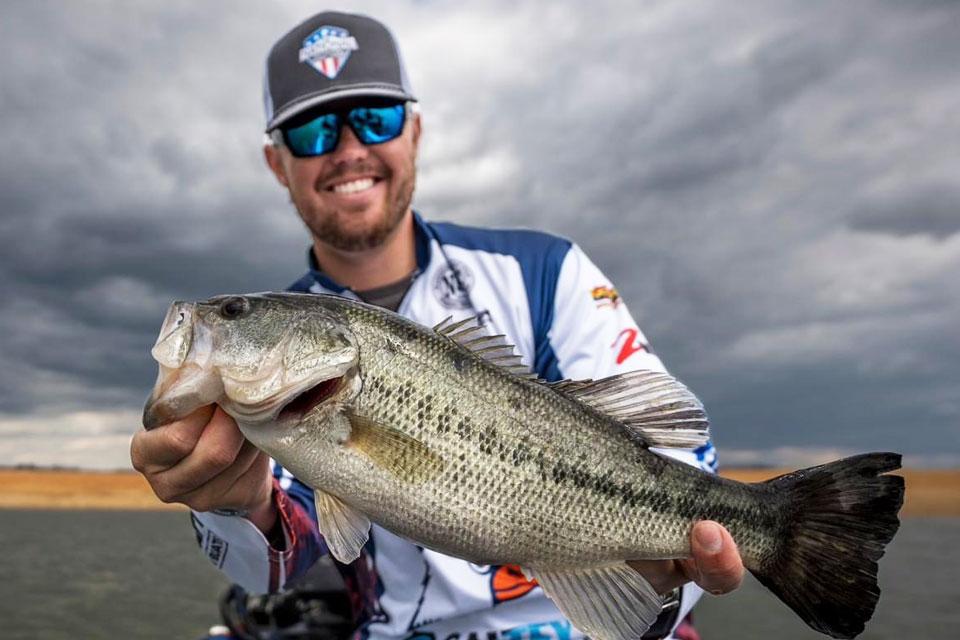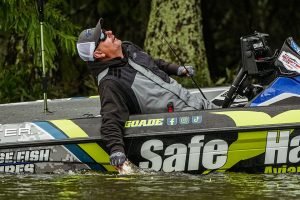Story by Hunter Sales | Photos by Tanner & Travis Lyons
This week, a massive weather system is moving across the Tennessee River Valley with expected rain totals ranging from 6-8 inches. In these scenarios, Douglas and Cherokee Lakes will be used as storage to prevent flooding downstream. This will cause the water levels to rapidly rise and bring the potential for some of my favorite fishing conditions. In this week’s article we’ll discuss how to attack these types of conditions.
Timing will be very important when trying to capitalize on water that could rise as much as 10 feet in a few days. Typically, we have at least one February weather system that will cause the water levels to rise 5-7 feet in a few days. In 2020, one system brought enough rain to raise Cherokee Lake nearly 20 feet in a week. The first few days of rising water can cause the fishing to slow down drastically, but after the water stabilizes and stays level for two days, the fish seem to get adjusted. Inevitably, this amount of water being introduced to the system also brings color with it. This colored water will hold heat better than clean water on a sunny day, so paying attention to the warming trends associated with a heavy rain like this is also critical.
The areas that I like to target when fishing after a springtime heavy rain are often areas that are near deeper water. These fish often know that the water will begin to recede in the coming days, so they don’t typically push towards the back of the creeks just yet. Instead, they slide up onto a flat at the end of a bluff wall or at the mouth of a creek. On Cherokee Lake, the area just south of the 25e bridge has a lot of areas that fit this description and have played home to some of my best days cranking on this lake.
A SPRO Little John MD in Spring Craw or Chartreuse/Black Back is one of my favorites on Cherokee Lake. The type of rock on Douglas is a bit different than Cherokee, so often times I’ll opt for a shallower-running crankbait on Douglas such as a Rapala DT6 or Ott’s Garage Rocco. I fish all of these baits on a softer rod that will help keep my Hayabusa treble hooks pinned, most recently the 7-foot-2 medium power moderate action St. Croix Mojo Bass Trigon Glass. Twelve-pound Seaguar InvizX always gets the nod for me as I can keep the bait in the strike zone without having to worry too much about the abrasion of the rock.
Once the water begins to recede, the fishing can stay really good as long as it isn’t dropping more than 5 or 6 inches per day. Falling water in East Tennessee at any time of year can actually help to position fish on the points which can create very predictable patterns. If the water is falling more than that, the fish tend to pull off the bank and suspend and they get very hard to target without using forward-facing sonar.
Anytime fish get grouped up on points in the spring, a jerkbait can be hard to beat! I usually opt for an Elegy Bone colored Megabass Ito Vision 110 with #6 Hayabusa hooks on a shorter rod like the 6-foot-8 medium, extra fast St. Croix Victory fished on 12-pound Seaguar InvizX. You’ll need to match your cadence to the water temperature, slowing way down if the water is below 50 degrees and getting more aggressive as the water nears 60.
Spring rains are part of life and can often signal some really good fishing in the days ahead. Now is a great time to tie on a small crankbait, put gas in the boat, and head over to East Tennessee. If anyone has questions about spring-time fishing in my area, feel free to reach out to my social media platforms and I’ll do my best to help!





